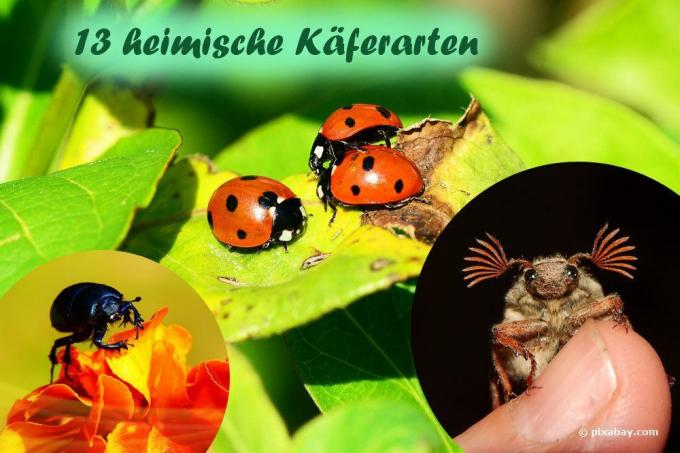
table of contents
- Scarab beetle
- Leaf beetle
- Longhorn beetle
- Short winged
- Ground beetle
- Ladybug
- Weevil
- Mud swimmers
- Click beetle
- Black beetle
- Bacon beetle
- Water treaders
- Soft beetle
There are over 350,000 species of beetle worldwide, some of which differ greatly in their appearance and way of life. Many beetles (Coleoptera) are also indigenous to Germany, including the popular ladybird. You can find out which Coleoptera you can also find in this country in the overview below.
Scarab beetle
Another species-rich beetle family is that of the scarab beetle, with around 28,000 subspecies. The distribution area of this beetle extends mainly over the tropics, but some scarab beetle species are also native to this country. The way of life of the scarab beetle differs depending on the species, because there are both dung and herbivores, but also predatory specimens. The latter includes, for example, Deltochilum valgum, which has a preference for millipedes.
For agriculture, scarab beetles can be both useful and harmful. The scarab beetles also differ visually, not only in their size. Some of them are particularly brightly colored and even scaly or hairy.

- Latin name: Scarabaeidae
- Size: 2 - 160 mm
- Color: brightly colored, metallic shimmer
- known beetles: forest cockchafer (Melolontha hippocastani), Eupoecila australasiae, Scarabaeus semipunctatus
Note: Many of the large scarab beetle species are eager to be bred and collected because of their unusual appearance.
Leaf beetle
Around 35,000 species of leaf beetles are known worldwide. The buyer is also widespread in Germany, because around 520 different leaf beetles are known in this country. The beetles stand out visually with their appearance, because they are usually metallic or brightly colored. Leaf beetles have a vegetable diet and are therefore feared even among amateur gardeners. The Colorado potato beetle, for example, is particularly dangerous for agriculture, as it can devour entire fields in a very short time.

- Latin name: Chrysomelidae
- Size: 1 - 18 mm
- Color: shiny metallic, colorful
- known beetles: lily of the valley chickens (Lilioceris merdigera), lily pad beetles (Galerucella nymphaeae), Colorado potato beetle (Leptinotarsa decemlineata)
Longhorn beetle
About 27,000 species of longhorn beetles are known, of which around 195 live in this country. The beetles usually have a dazzling, colorful appearance and can get very large. The largest specimen is the giant longhorn beetle (Titanus giganteus) native to Brazil, which can reach a length of around 17 centimeters. The largest longhorn beetle in Germany is the Mulmbock (Ergates faber), which is about six centimeters tall. Longhorn beetles have a vegetable diet, with pollen, leaves and leaking tree sap on their menu. They can cause damage to the plants, as their larvae drill through the wood.

- Latin name: Cerambycidae
- Size: up to 17 cm
- Color: often iridescent
- known beetles: small poplar buck (Saperda populnea), earth buck (Dorcadion), weaver buck (Lamia textor)
Short winged
Short-winged species are among the most species-rich families within the Caleoptera. Of the more than 47,000 known beetle species, around 1,500 are native to Germany. There they live mainly in damp habitats, many of which can be found on the edge of water. The way of life of these beetles differs depending on the species: some species are carnivorous and live predatory, while others live on plants or fungi. Many of the small species are mostly diurnal, whereas the larger specimens are mostly nocturnal.

- Latin name: Staphylinidae
- Size: 1 - 30 mm
- well-known beetles: Imperial Kurzflügler (Staphylinus caesareus)
Ground beetle
Ground beetles are an extremely species-rich extended family and comprise over 40,000 species. More than 550 of them live in Germany, most of them being rural residents. Their habitat ranges from flatlands to high alpine regions. They particularly prefer wet to dry and warm areas. Among other things, they live under bark, in caves, underground, but also on trees and bushes.
The majority of ground beetles are nocturnal and many of them can fly. They are predatory and feed on other insects and larvae, as well as larger molluscs such as worms and snails. They mostly find their food on land, although some beetles also hunt in the water.
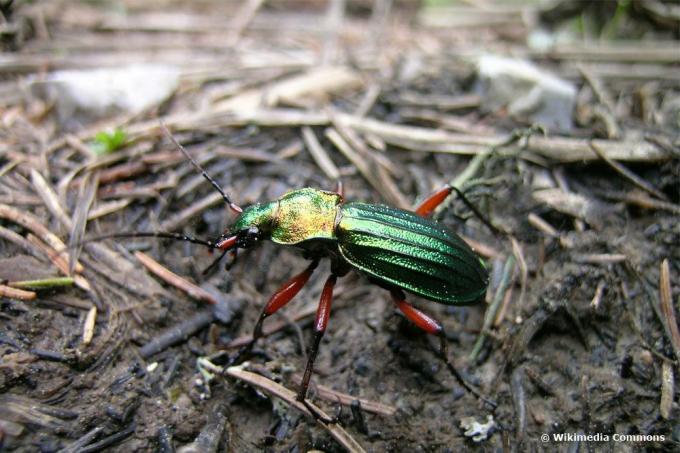
- Latin name: Carabidae
- Synonyms: real ground beetles, large ground beetles
- Size: 1 - 85 mm
- Color: dark resp. black, metallic
- natural enemies: insectivores, ectoparasites
- known beetles: gold beetle (Carabus auratus), pupa predator (Calosoma)
Note: Some ground beetle species are now considered endangered.
Ladybug
The ladybird is undisputedly one of the most popular Coleoptera families. Around 6,000 species of ladybirds are known worldwide, of which around 82 live in this country. Ladybugs are medium in size and have an oval to hemispherical body. They are able to fly and mostly feed on aphids and scale insects. That is why they are also considered beneficial insects in agriculture and are welcome beetles in the garden. Among the ladybirds there are also nocturnal specimens such as the light ladybird (Calvia decemguttata).
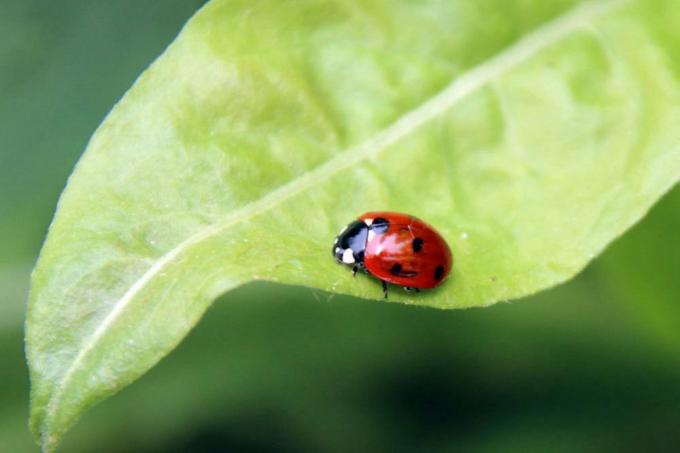
- Latin name: Coccinellidae
- Synonyms: Siebenpunkt, Glückskäfer, Herrgottskäfer, Moschekiebchen
- Size: 1 - 12 mm
- Color: red, yellow, light beige, orange, brown, pink black
- known beetles: seven-spotted ladybird (Coccinella septempunctata), light ladybird (Calvia decemguttata), two-spotted ladybird (Adalia bipunctata)
Note: Not all ladybug species have the typical black spots. Some specimens have white or yellow spots, while other ladybugs have no spots at all.
Weevil
The weevils take the place of the most species-rich families of beetles. More than 60,000 species of this Coleoptera are known worldwide, which make up around 15% of all beetle species. It is believed that weevils are the most biodiverse family of all living things. With around 950 species, many species of beetle are also indigenous to Germany. They live on a wide variety of plants, with some species of beetles being tied to certain plants. This is where the saying "Every plant has its weevil" comes from. They not only live on the plants, but also feed on them, which is why they are definitely feared among amateur gardeners.
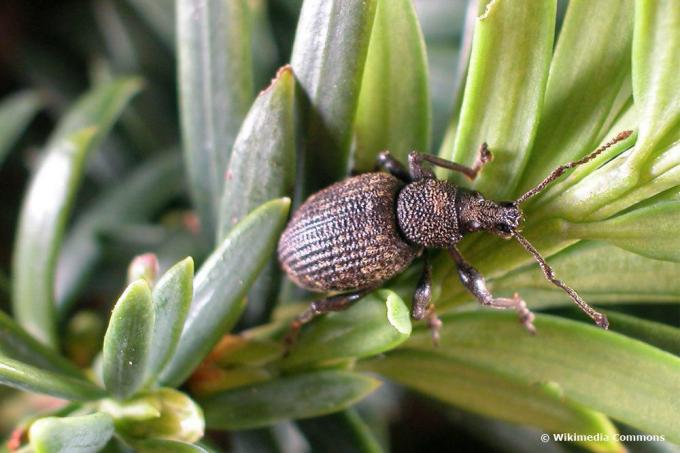
- Latin name: Curculionidae
- Synonyms: Rüssler
- Size: 1.3 - 20 mm
- known species of beetle: weevil (Hypera zoilus), black weevil (Otiorhynchus sulcatus)
Note: Some species of weevil reproduce unisexually (parthenogenetically).
Mud swimmers
The mud swimmer is one of the species-poor families of beetles, because there is only one genus and six species of these beetles. In Europe or only one species is native to Germany, namely the Hygrobia hermanni. Mud swimmers mostly live in stagnant water such as ponds. They prefer bodies of water that are only moderately or sparsely vegetated. The mud swimmers are moderately good swimmers, but tend to move slowly in the water. They feed predatory and lay their larvae in muddy-loamy areas.

- Latin name: Hygrobiidae
- Synonyms: Moist beetles, screech beetles ("screeching beetles"), swamp beetles
- Size: 8.5 - 10 mm
- known beetle species: Hygrobia hermanni, Hygrobia davidi
Click beetle
Around 10,000 click beetle species are known around the world, and their appearance is fairly uniform. They have an elongated body and are usually dark or dyed red. A special feature of the click beetle is that they can catapult themselves into the air with the help of a jumping device. This enables them to quickly get out of their supine position and escape enemies.
Click beetles mostly live in the soil, soil litter, and deadwood. However, their way of life differs depending on the species: there are species that feed on plants and mainly eat leaves and flowers. Some click beetles, on the other hand, are predatory and feed on insect larvae. The click beetle larvae also like to gnaw on plant roots, which is why they are notorious as pests.
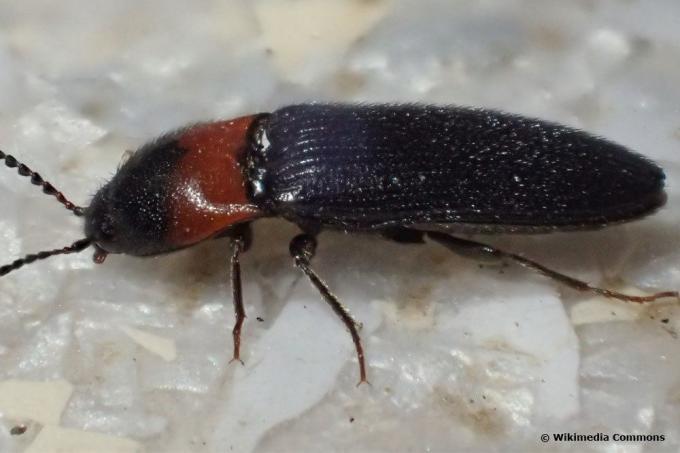
- Latin name: Elateridae
- Synonyms: click beetles
- Size: 0.9 - 75 mm
- known species of beetles: Ampedus sinuatus, Ampedus erythrogonus, Ampedus rufipennis
Note: The click beetles owe their nickname “click beetles” to the noise they make when they catapult themselves into the air.
Black beetle
The black beetle is also one of the most species-rich families of the Coleoptera. According to current knowledge, there are around 20,000 black beetle species worldwide, of which only 67 are registered in Germany. Both plants and omnivores exist among the black beetles. Although they prefer to eat rotting and rotten plant parts, they also feed on seeds, fungi and dead insects. Typical human food supplies are also on their menu, which is why black beetles are sometimes viewed as feared pests.

- Latin name: Tenebrionidae
- Synonyms: dark beetle
- Size: 1 - 50 mm
- Color: black, black-brown, rusty yellow, brown
- known beetle species: similar dead beetle (Blaps lethifera), large black beetle (Zophobas morio), meal beetle (Tenebrio molitor)
Note: Numerous species of black beetle can secrete a quinone-containing secretion. This is particularly bad-smelling and serves to ward off natural enemies.
Bacon beetle
The bacon beetles form a family with over 1300 species worldwide. They are characterized by their compact build and a rounded or rounded shape. oval shape. The appearance can vary within the bacon beetle species: There are specimens with decorated carapaces, but also scaled or hairy animals. The way of life also differs within the bacon beetle species: There are flower visitors and scavengers as well as bacon beetles that inhabit bird, bee and wasp nests. Bacon beetles also like to spread in the home, which is why they are also considered pests for storage and collection.
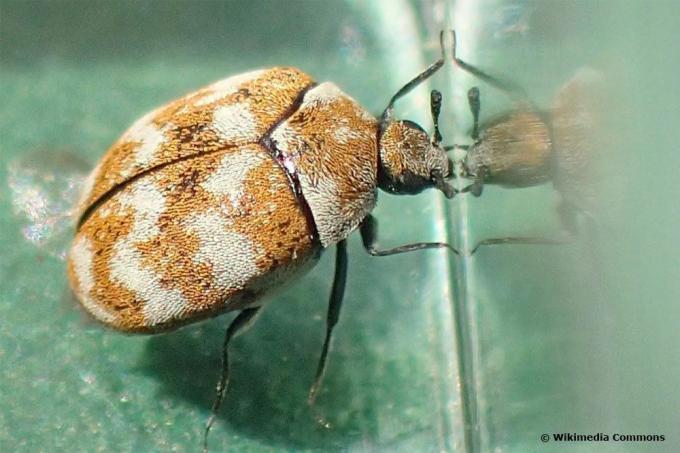
- Latin name: Dermestidae
- Synonyms: Common bacon beetle
- Size: 1- 10 mm
- Color: brown to black basic color, sometimes spotted
- known species of beetle: cabbage flower beetle (Anthrenus verbasci)
Water treaders
Over 200 species of water treadmill are known worldwide, around 20 of which are native to Germany. They are one of the rather small families of beetles, as they are only five millimeters in size. Treaders prefer to live in stagnant and slow-flowing waters, but are rather poor swimmers. In the water they move more crawling than swimming. Water treaders feed on aquatic plants as well as small crabs and mosquito eggs, among other things.

- Latin name: Haliplidae
- Size: 2 - 5 mm
- Color: yellow to red-brown, black spots / dots
- known species of beetle: Brychius elevatus, Haliplus ruficollis
Note: Wassertreter denotes not only a beetle family, but also a genus of arctic snipe birds.
Soft beetle
There are around 4,500 species of soft beetle worldwide, of which around 530 are native to Europe and 86 to Germany. Soft beetles prefer to live in forests and fields as well as in meadows and gardens. Many of them have a vegetable diet, while others have a predatory lifestyle. The latter feed primarily on small insect species as well as caterpillars and aphids. A special feature of the soft beetle is its weakly sclerosed body, which is why it is very soft compared to many other beetles.
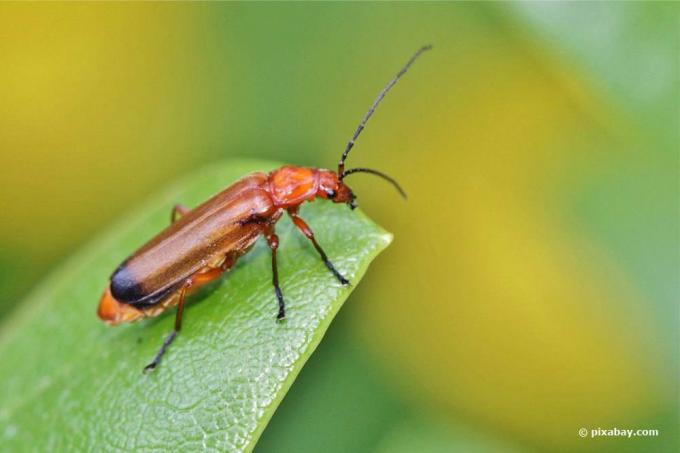
- Latin name: Cantharidae
- Synonyms: soldier beetle
- Size: 1.2 - 28 mm
- Color: red, black, yellow, blue, orange
- known species of beetle: red soft beetle (Rhagonycha fulva), common soft beetle (Cantharis fusca)
Note: The soft beetle earned the nickname “soldier beetle” because of the striking coloration of many species.


